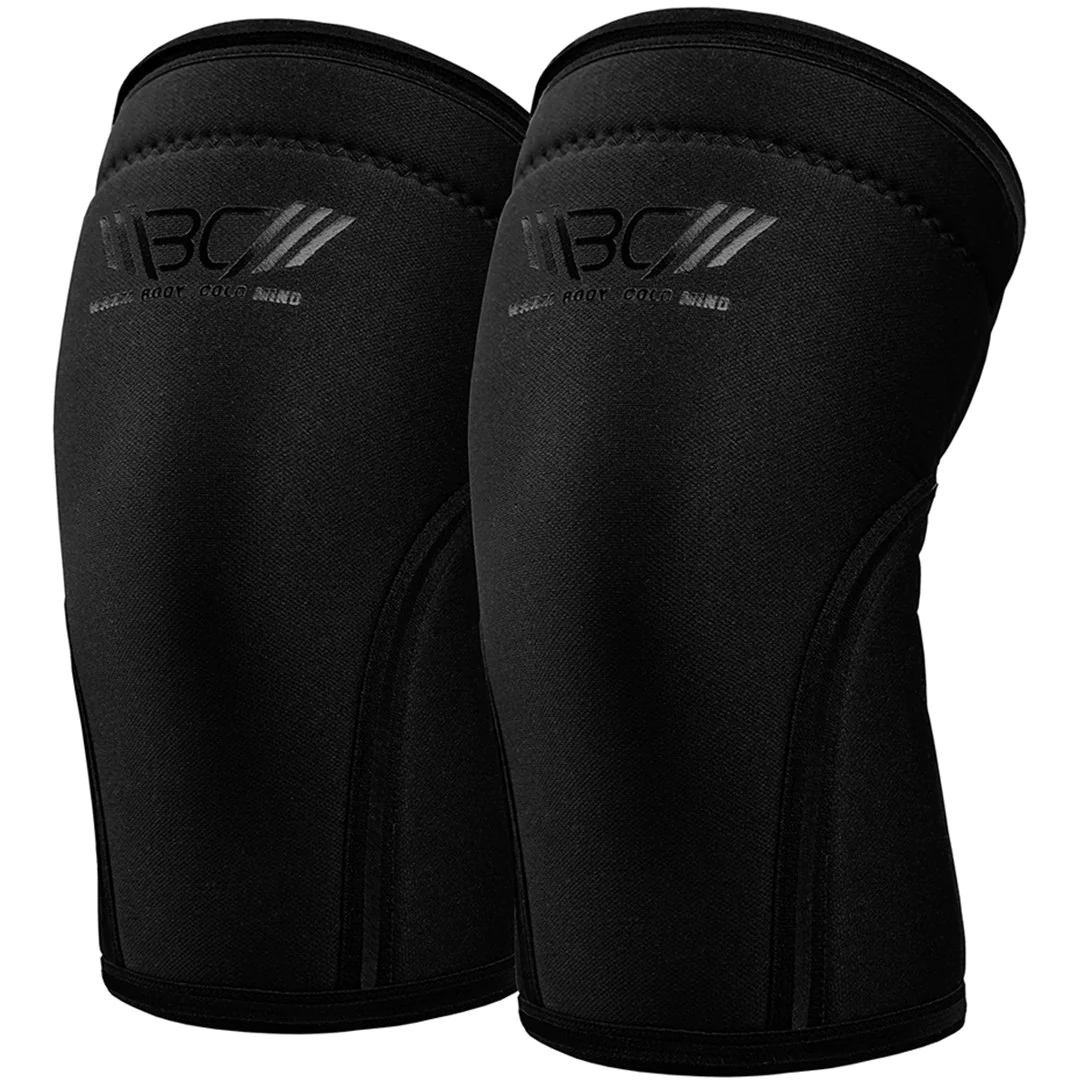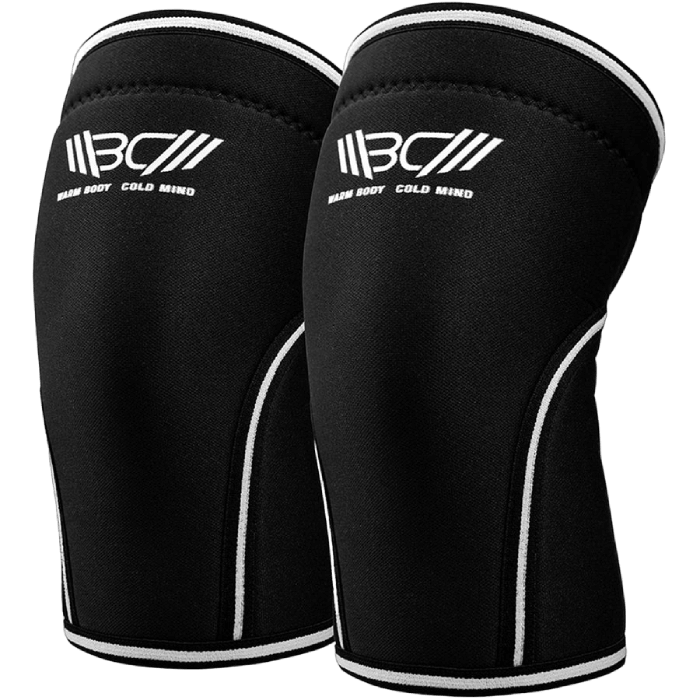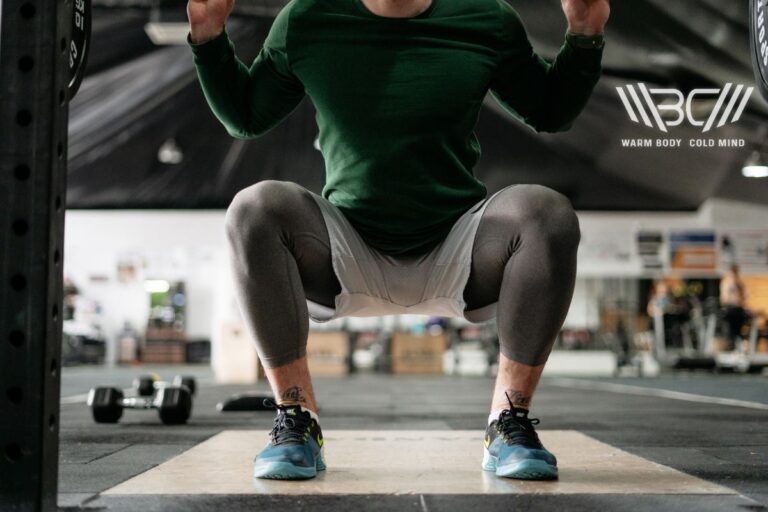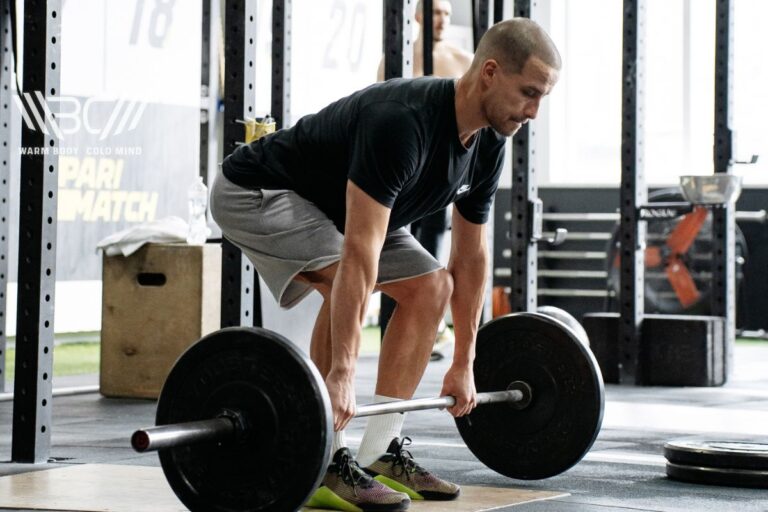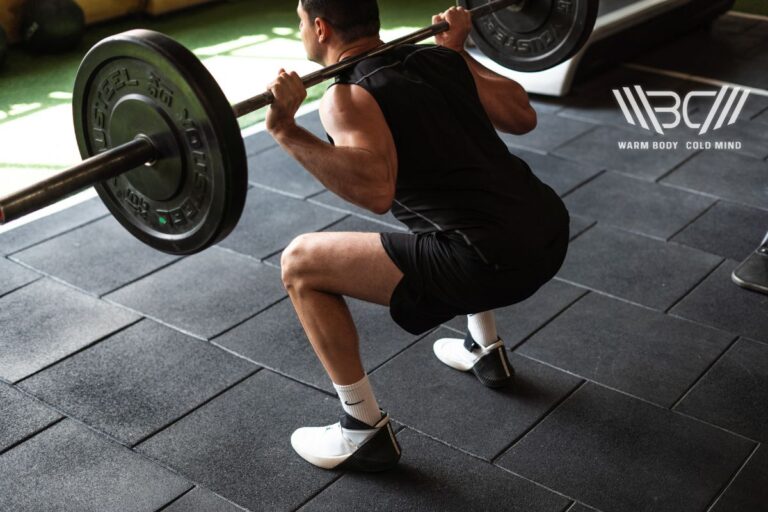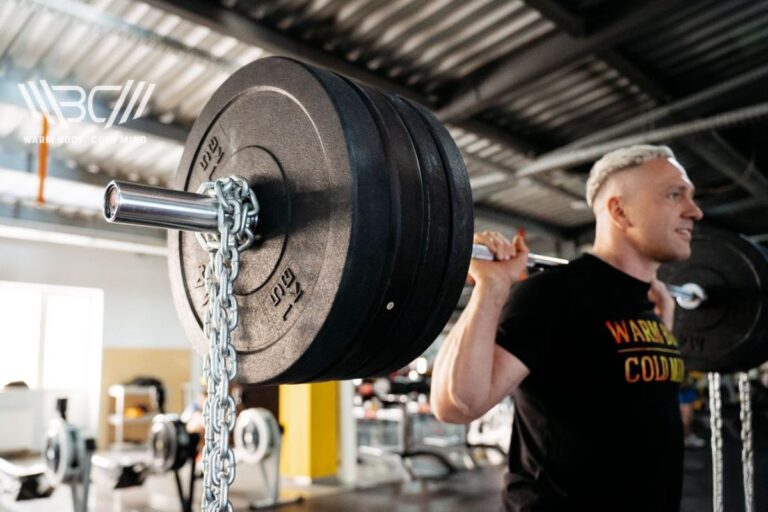How to Measure for Knee Sleeves? Pick the Right Size
When worn correctly, knee sleeves provide support, stability, and compression to the knee joint and surrounding structures. Finding the right size can be tough, especially if you don’t know how to measure them.
A question you may ask is what size knee sleeves do I need? We’ve provided a detailed sizing guide looking at how to measure knee sleeves and explained the common mistakes when fitting them below.
What Size Knee Sleeves Do I Need? – The knee sleeves should fit around the knee joints to provide a snug fit without restricting blood flow or becoming painful. Use the manufacturer’s knee sleeves sizing chart and go with the size below if you are in between sizes.
Knee Sleeves for Athletes – The Importance of Measuring Correctly
Knee sleeves are a type of compression garment designed to be worn around the knee joint, ligaments, and surrounding structures to provide compression, support, and stability. Improvements in these may then improve high-intensity exercise and sports performance.
They are commonly constructed using flexible fabrics such as neoprene, SBR, spandex, and nylon which allows the material to stretch without losing its shape and compressive properties.
Once the knee sleeves are against the knee joints, they should stay firmly against the skin to provide a snug fit without restricting blood flow or becoming uncomfortable to wear.
Whilst some material movement is normal with repeated use over time, high-quality materials that are fitted correctly should mold to the shape of the knee joints without losing shape or sliding down the leg.

7mm Weightlifting Knee Sleeves
Discover the ultimate support with Warm Body Cold Mind knee sleeves providing stability and comfort.
Sizing the knee sleeves properly before using them is important to ensure they perform the purported benefits. Care should be taken to measure your knee joints in the correct position to get a true measurement.
As knee sleeve sizing charts are not universal between brands, check the manufacturer’s table before buying a suitable pair once you know your sizing.
Not measuring correctly before using knee sleeves may lead to no difference in performance and increase the risk of injury if trying to lift heavier weights when using them.
If unsure, consider using the help of a professional who can take you through the correct sizing process and advise you on what to do if you are between sizes or want knee sleeves for specific movements.
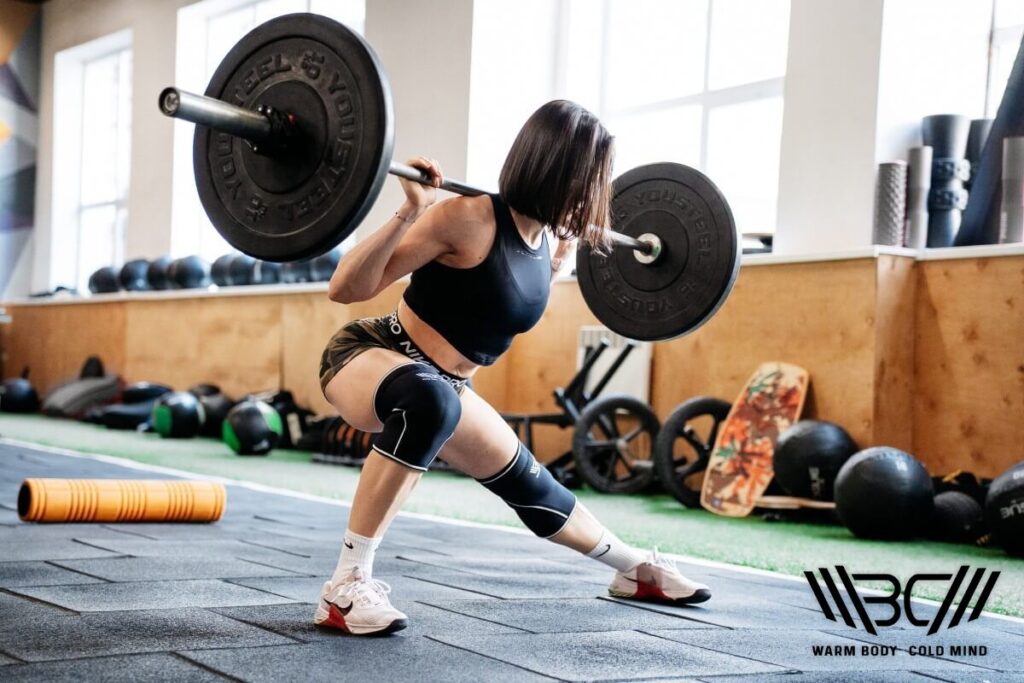
When Should Athletes Wear Knee Sleeves?
Before using knee sleeves for lifting, the focus should be on developing movement patterns naturally in order to build-up muscle strength and stability without the use of lifting aids. Over-reliance when lifting and exercising is a common issue if knee sleeves are used during all training sessions and competition settings.
The types of athletes that will benefit the most from the use of knee sleeves include:
- Competitive Strength Athletes
- Powerlifters
- Strongman and Strongwoman Competitors
- Functional Fitness Athletes
- Weightlifters
- Performing high-intensity work
- Following/During periods of injury
- Sports Athletes
- Sports requiring strength and power such as basketball, tennis, and rugby
Knowing when to wear knee sleeves depends on the exercise or sport being performed. Other factors such as material type and thickness should also be considered, with thicker materials offering more compression but at the expense of movement freedom.
When performing strength-based movements, the warm-up and build-up sets should be done normally without the use of knee sleeves. Perform a suitable warm up before lifting in order to get the blood flowing around your body and your knee joints.
Once you reach your working sets and/or maximal effort, put the knee sleeves on for added support and compression. You should be able to keep them on your legs between sets if needed.
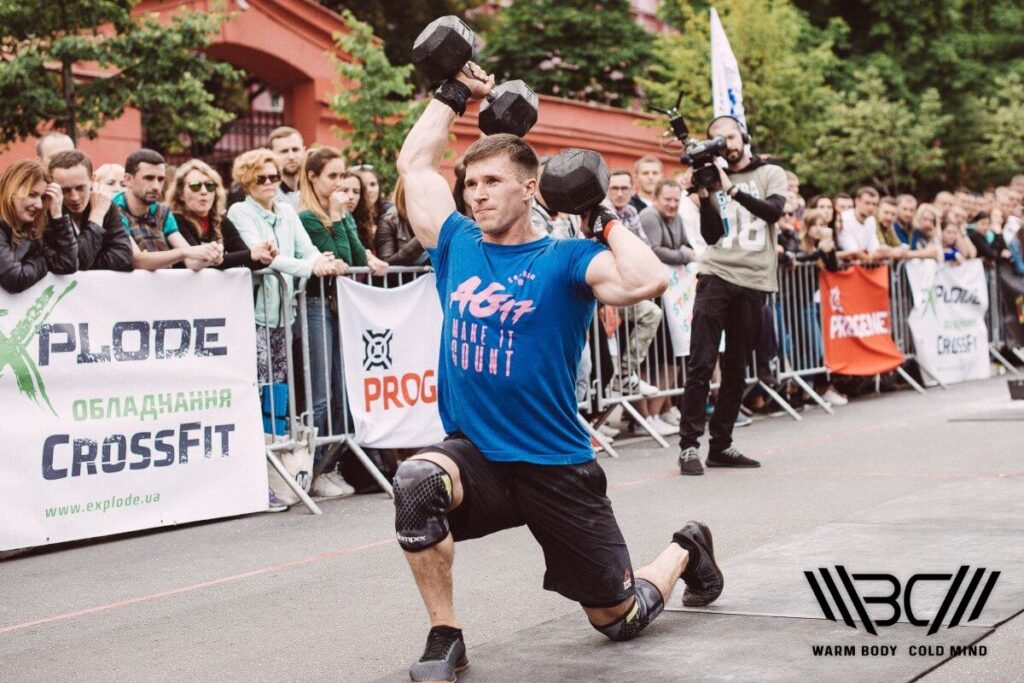
When using knee sleeves for sports training and competition, the frequency of use will depend on the specific sporting requirement and type of knee sleeve being used.
Sports requiring more continued maximal efforts such as basketball and rugby may require more usage whilst sports performed at a lower intensity may only require the use of knee sleeves periodically.
Bare in mind that following surgery or during periods of injury, knee sleeves may be worn more even during lower-intensity training and sport to provide support and stability when the knee joints are weaker.
Knee Sleeve Sizing Charts According to Type
Sizing knee sleeves correctly can become difficult due to the knee sleeve sizing charts not being universal between brands. Refer to the tables below as a general reference guide if you are wondering how should knee sleeves fit for certain brands. Make sure to check the manufacturer’s instructions for other knee sleeve brands not shown below.
1. On the Knee Measurement
When sizing our knee sleeves, a measurement should be taken in the middle of the kneecap. Start by straightening the leg before measuring the circumference of your knee at mid-patella. Make sure to use a flexible measuring tape.
| Size | Measure around the kneecap | Knee pad length | ||
| S | <11.8” | 30CM | 11” | 28CM |
| M | 11.8”-13” | 30CM-33CM | 11” | 28CM |
| L | 13”-14.2” | 33CM-36CM | 11.4” | 29CM |
| XL | 14.2”-15.7” | 36CM-39.5CM | 11.4” | 29CM |
| XXL | 15.7”-17” | 39.5CM-43CM | 11.4” | 29CM |
| XXXL | 17”-18.3” | 43CM-46.5CM | 11.4” | 29CM |
2. Below the Knee Measurement
Rogue is another popular knee sleeve brand option that asks that the knee measurement should be taken from below the knee. Start by bending the knees to 30 degrees and take the circumference of the upper calf approximately 4” below the kneecap. Notice the difference in their sizing chart:
| Size | Centimeters (CM) | Inches (“) |
| XS | 31CM-33CM | 12.2”-13” |
| S | 33CM-35CM | 13”-13.8” |
| M | 35CM-37CM | 13.8”-14.6” |
| L | 37CM-40CM | 14.6”-15.7” |
| XL | 40CM-43CM | 15.7”-16.9” |
3. Above the Knee Measurement
PowerLix uses a sizing chart that requires you to measure above the kneecap when sizing them correctly. Take the circumference of your thigh approximately 5” above your kneecap.
| Size | Centimeters (CM) | Inches (“) |
| S | 29.2”CM-34.2CM | 11.5”-13.5” |
| M | 34.5CM-41.9CM | 13.6”-16.5” |
| L | 42CM-49.5C | 16.6”-19.5” |
| XL | 49.6CM-59.6CM | 19.6”-23.5” |
| XXL | 59.9CM-66CM | 23.6”-26” |
How to Measure Knee Sleeves Correctly: 4 Easy Steps
Follow the step-by-step guide below to measure correctly when looking to buy a pair of knee sleeves.
Step 1: Find the Measurement Point
Before breaking out the measuring tape, you need to find out where you should be measuring. Sizing charts aren’t universal which means they vary between brands. The three primary places to measure are:
- On the kneecap
- Below the kneecap
- Above the kneecap
Refer to the manufacturer’s guidance to check the measurement point for the type of sleeves you are looking to purchase.
Subscribe!
The latest reviews of must-have home gym training equipment, apparel, and supplements that will enhance your performance and bring you new results.
Step 2: Position Your Leg Correctly
Once you’ve found your measurement point, you’ll need to position the leg correctly before you measure. Most brands require you to sit in a relaxed position and bend your leg at a 30-degree angle. Some also say you can measure the circumference with a relaxed, straight leg.
Check the specific instructions on the manufacturer description. If guidance hasn’t been given, go with a 30-degree measurement.
Step 3: Take the Measurement
Now that you know where to measure and how to position your leg, it’s time to take the measurement. Get a flexible measuring tape and wrap it around the stated area. Make sure the tape is firmly against the skin but make sure not to pull it too tight.
Record the measurement on a piece of paper. Make sure to do this process 2-3 times to ensure measuring accuracy. Both legs may also be measured to see if there are any big differences between the two.
If you don’t have tape to hand, use a flexible piece of string and mark where the measurement would be. Following this, use a ruler or standard tape to take the measurement.
Step 4: Refer to the Manufacturer’s Sizing Chart
Now that you have the correct measurement, use the manufacturer’s sizing chart to choose a suitable size for your legs. If you are in between sizes, go with a size down.
Our Recommended Knee Sleeves – Weightlifting Knee Sleeves
Our 0.25” thick neoprene knee sleeves have been constructed to a high-quality standard, offering excellent comfort, compression, and support when exercising. The neoprene material offers great flexibility without stretching out of place and helps to prevent moisture build-up and keep the sleeves fresh after use.
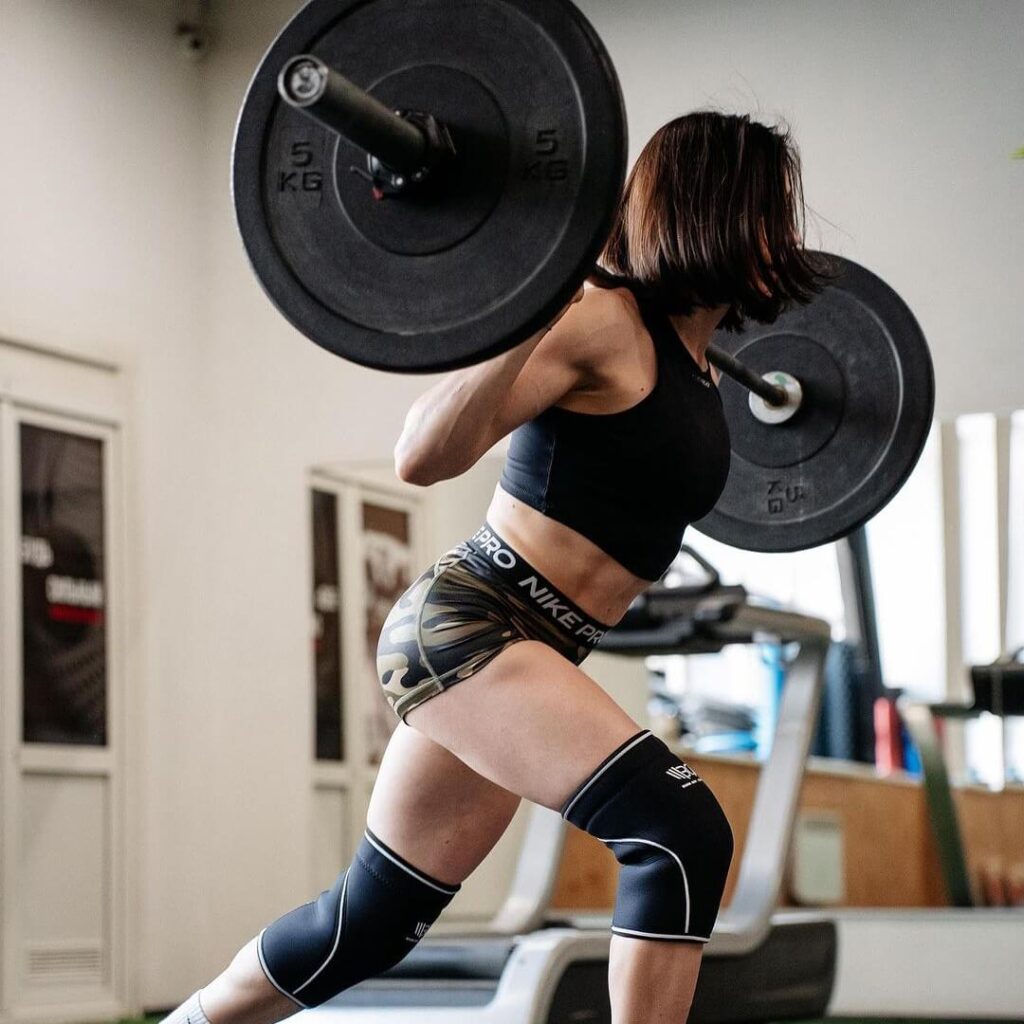
To keep our sleeves secure when lifting, we’ve designed them with an anti-slip system around the edges that keeps them firmly against the knee joint. They are great for powerlifting, weightlifting, running, and other sporting activities. We offer them in three color schemes and from S to XXXL.
Common Mistakes and Potential Drawbacks of Choosing the Wrong Size
Make sure to avoid these common mistakes during the sizing process to avoid the potential drawbacks discussed below. Here are the three most common mistakes:
1. Choosing the Wrong Measurement Site
Choosing the correct measurement site is vital to ensuring a proper sleeve fit. Unfortunately, most people don’t realize there are three different measurement sites, with different brands using different ones which are then reflected in their sizing charts.
2. Not Measuring Accurately
As we’ve discussed above, make sure to take 2-3 measurements of the same kneecap and measure both legs to ensure accuracy. Check for any big differences between your knee joints. If you’re unsure, ask a friend or professional to help you with the measuring process.

3. Not Considering Knee Sleeve Thickness
Most brands offer several types of knee sleeves which vary in material type and thickness. The thicker the material the more compression but at the expense of movement freedom.
Make sure to bare this in mind when sizing correctly. If you are looking for a size down, thicker knee sleeves have much more chance of being too tight compared to thinner ones with more flexibility.
Making any of these mistakes can lead to the wrong size being chosen which will then impact the performance of the sleeves and the benefits given. Knee sleeves are designed to offer compression and support when fitting snugly against the knee joint without being overly restrictive.
Choosing the wrong size may cause the knee sleeves to move too much when using them or restrict movement to an extent where it becomes too uncomfortable and possibly damages the skin.
Over time, this may also lead to minor or even major injuries if the correct size isn’t used. If unsure, consult the help of a friend or professional who should be able to check for the correct sizing.
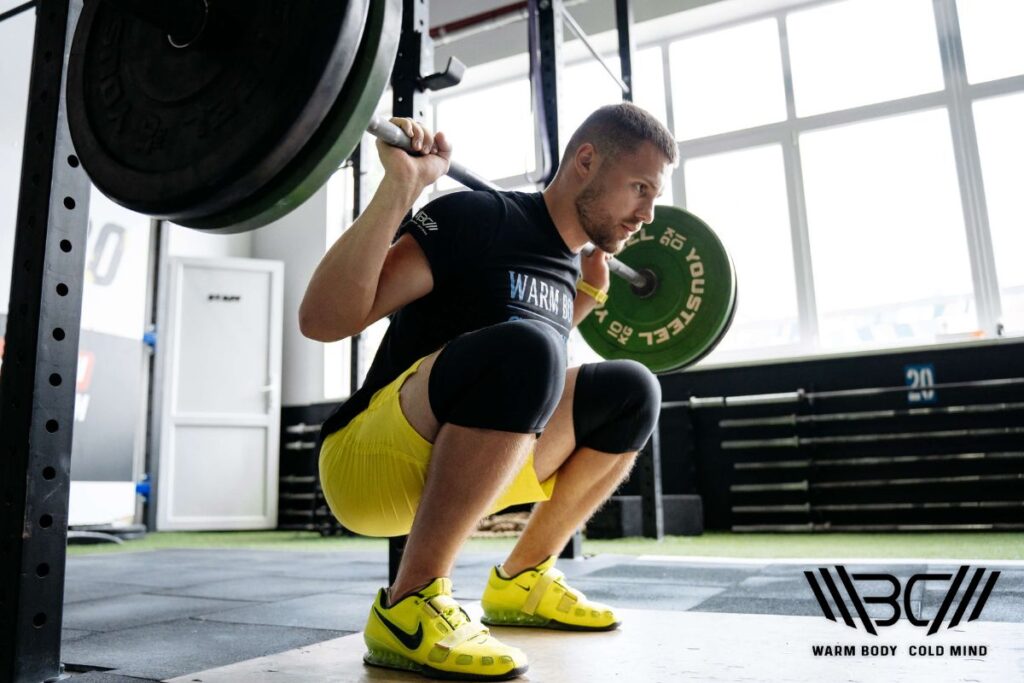
FAQ
Should I Choose 5mm or 7mm Knee Sleeves?
Choosing between 5mm or 7mm knee sleeves comes down to the amount of support and movement freedom you need for the sporting activity or gym exercise.
If you need moderate support with more movement freedom for dynamic activities such as Olympic lifts and sports events, wear the 5mm knee sleeves. If you want more support but less movement freedom for more strength-based exercise, go with the thicker 7mm knee sleeves.
How Tight Should Knee Sleeves Be?
Knee sleeves should be tight enough to provide compression and added support without heavily restricting movement. Thicker knee sleeve materials will still restrict movement more however you fit them.
Bring your fingers under the knee sleeves to check for the fit. Make sure there is some resistance for a snug fit without it being overly hard to press against the material.
What if You’re in Between Sizes?
When in between sizes, it’s best to go one size down. Whilst knee sleeves will start tighter, they tend to loosen slightly over time even when made with high-quality neoprene or other stretchy materials.
Go with a size down to ensure good support and compression throughout your gym movements and sports.
Do Knee Sleeves Stretch Out?
High-quality knee sleeves are designed to keep their shape well, even with repeated, high-intensity movements. Over time, they should get easier to put on as they adapt to the anatomical shape of your knee joints.
Lower-quality knee sleeves are much more likely to lose their shape over time due to the lower-grade materials used in the construction process.
How Are Knee Sleeves Supposed to Fit?
Knee sleeves should provide a snug fit around the knee joint and surrounding structures for compression and support. They should be fitted to reduce perceptions of muscle soreness and pain following exercise. They should be tight enough so that they don’t move during exercise but not so tight that they restrict circulation or are painful to wear.
Conclusion
When sizing knee sleeves, refer to the manufacturer’s guidance to check where the measurement should be taken from. Once you’ve found out where to measure, position the leg correctly and take the measurement. Check the brand sizing chart and pick the appropriate size.
Go with a size down if you are in between sizes. Do you use a different process when sizing knee sleeves? Are knee sleeves supposed to be tight? Let me know below and I’ll try to answer any questions you may have!
References
- Braid A. MacRae, James D. Cotter, Rachael M. Laing, “Compression Garments and Exercise: Garment Considerations, Physiology and Performance,” Journal of Sports Medicine 10, no.41 (2011):815-843. doi:10.2165/11591420-000000000-00000
- Joshua A. Sear, Trent K. Hoare, Aaron T. Scanlan, Grant A. Abt , Benjamin J. Dascombe, “The effects of whole-body compression garments on prolonged high-intensity intermittent exercise,” Journal of Strength and Conditioning Research 7, no.24 (2010):1901-1910. doi:10.1519/JSC.0b013e3181db251b
- Mark Bell Sling Shot, “How Do I Size for a Knee Sleeve?.” YouTube, https://youtu.be/kLVl8BptlsI?si=rWzoIZZcAUjdEIHb (Accessed December 27, 2023)
- Jonathan Weakley, James Broatch, Shane O’Riordan, Matthew Morrison, Nirav Maniar, Shona L. Halson, “Putting the Squeeze on Compression Garments: Current Evidence and Recommendations for Future Research: A Systematic Scoping Review,” Journal of Sports Medicine 5, no.52 (2022):1141-1160. doi:10.1007/s40279-021-01604-9
Author: Sergii Putsov
PhD in Sport Science, Olympic weightlifting, Strength & Conditioning coach and fitness expert
Sergii Putsov is a professional weightlifter with over 20 years of experience and multiple national medals. He was a member of the National weightlifting team, competing in the 94 kg weight class. Sergii holds a master’s degree in Olympic & Professional Sport Training and a Ph.D. in Sport Science. After his athletic career, Sergii transitioned into coaching and is now responsible for designing training programs, writing blog articles, providing live commentary for international weightlifting competitions, and hosting sport and fitness seminars worldwide.


